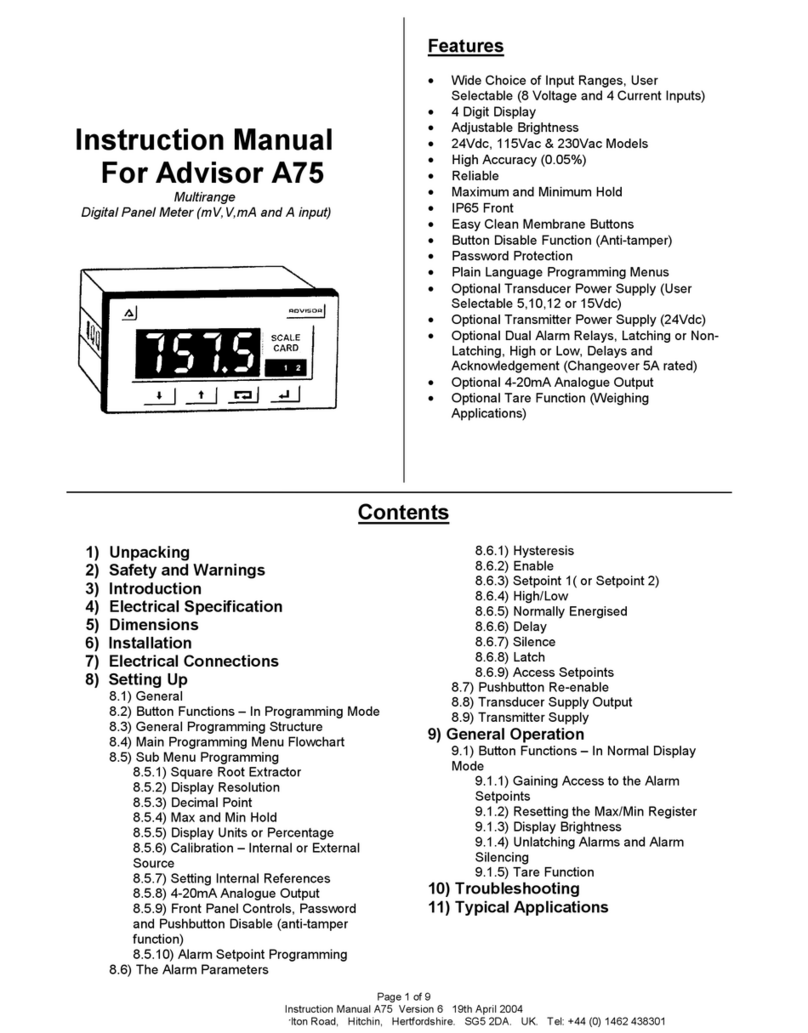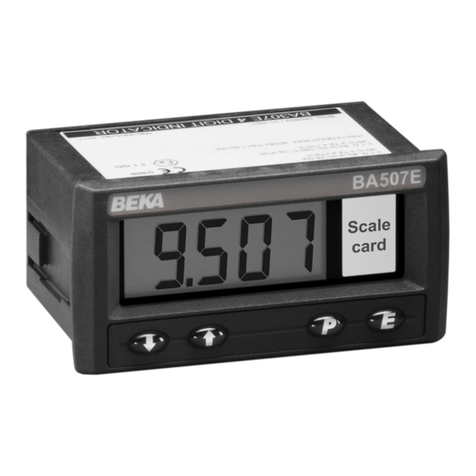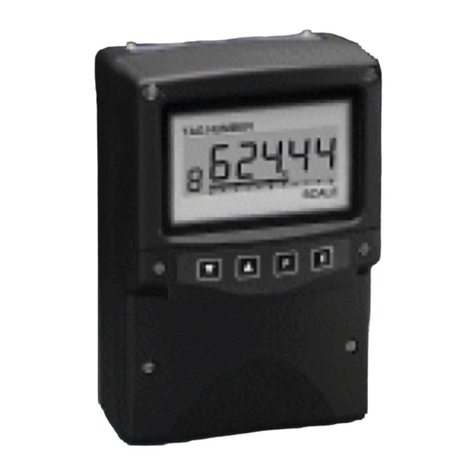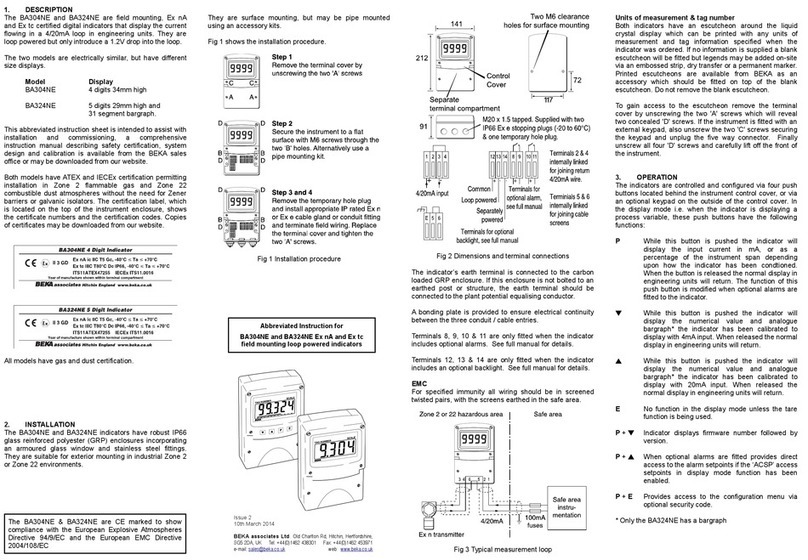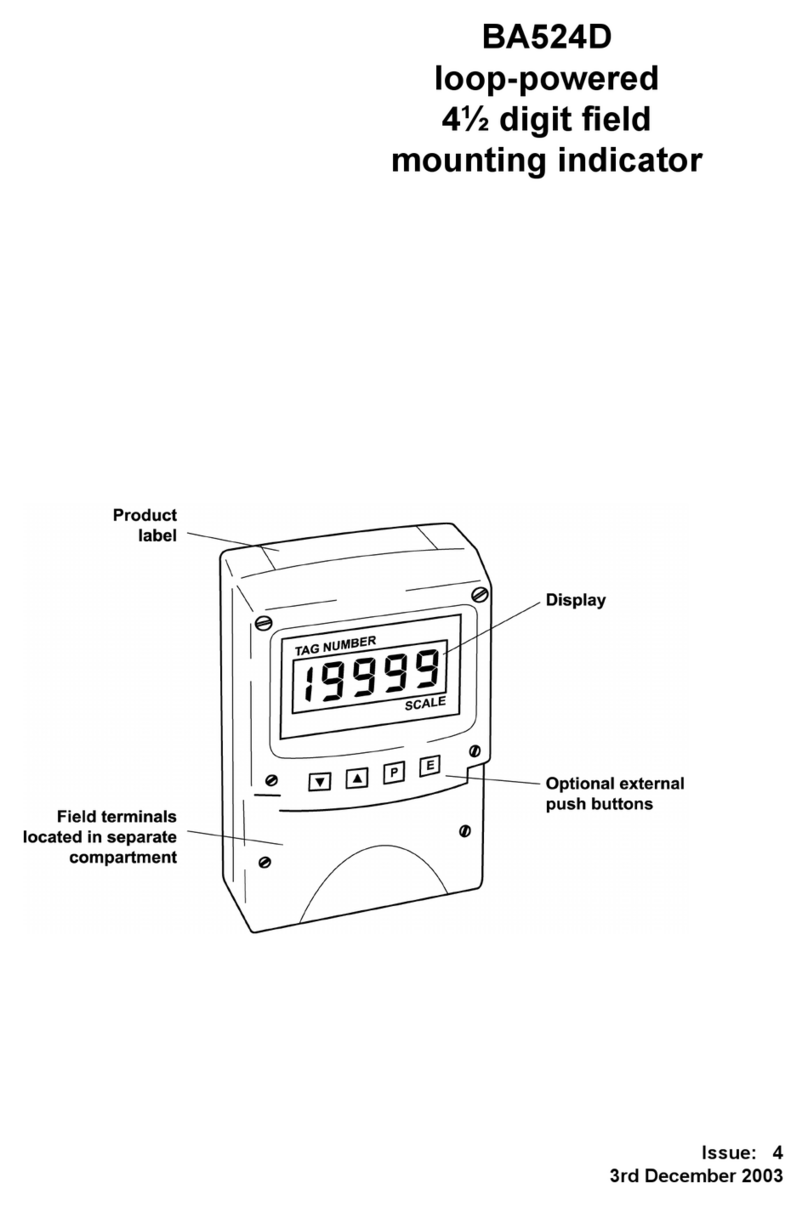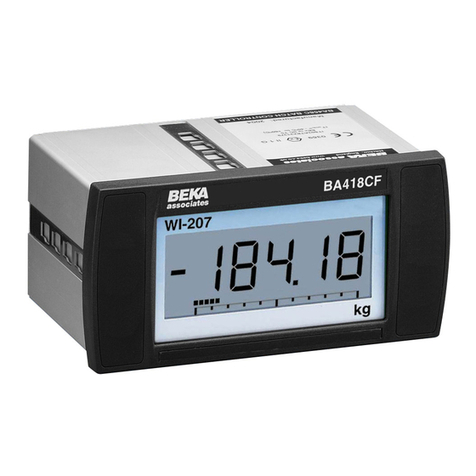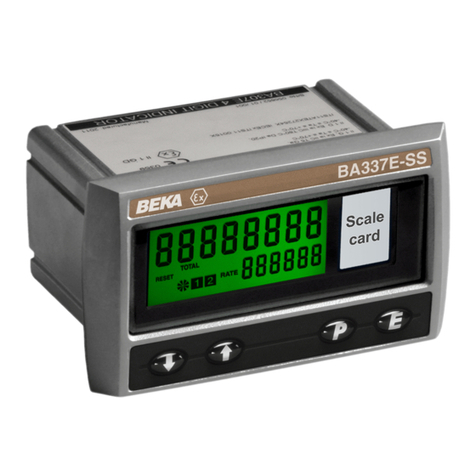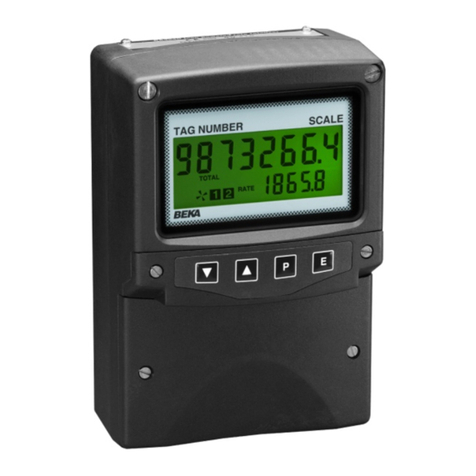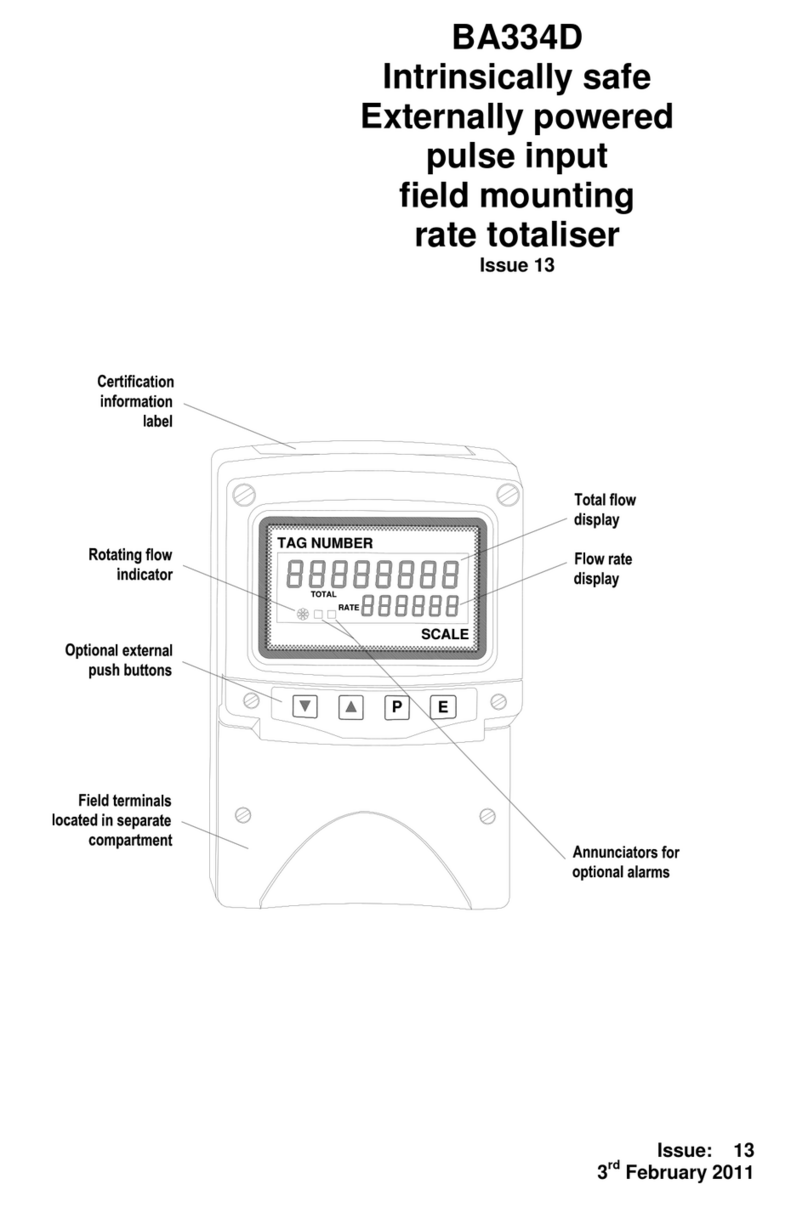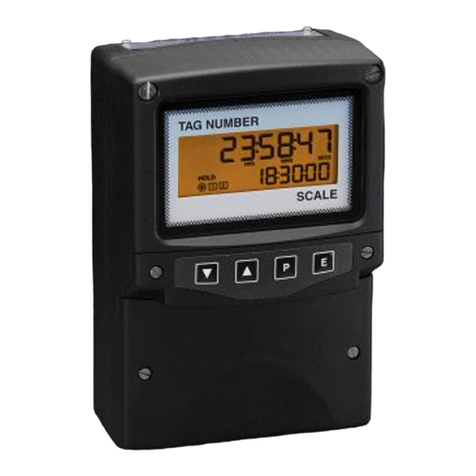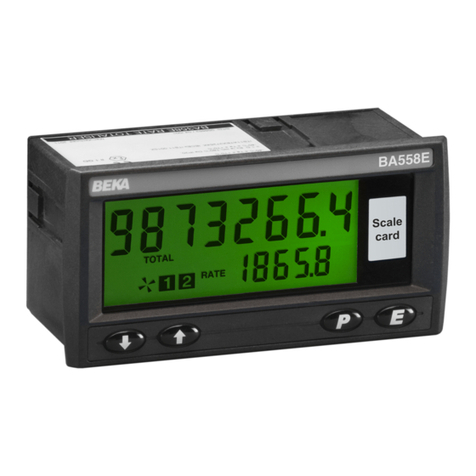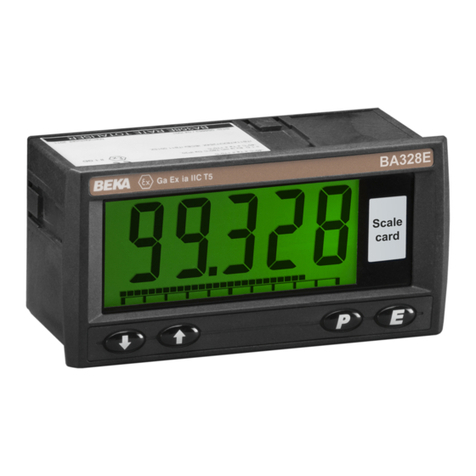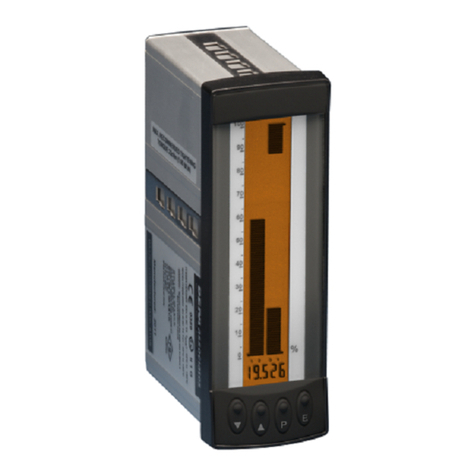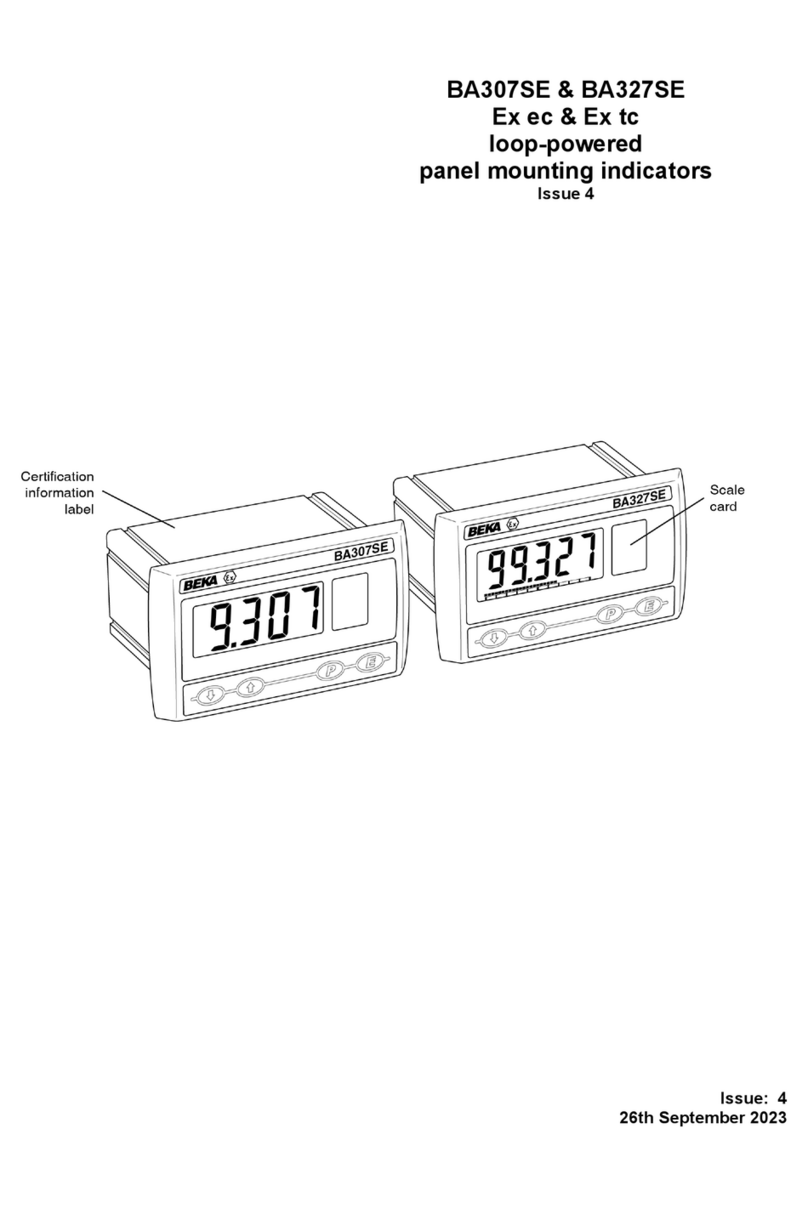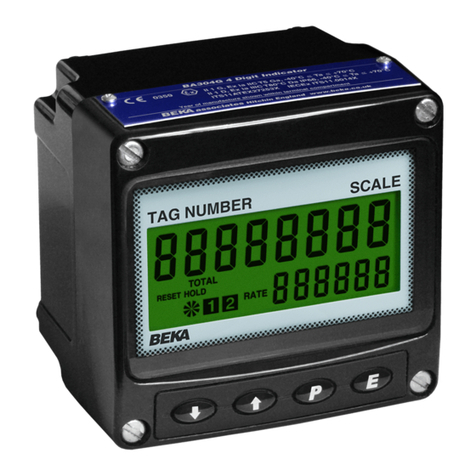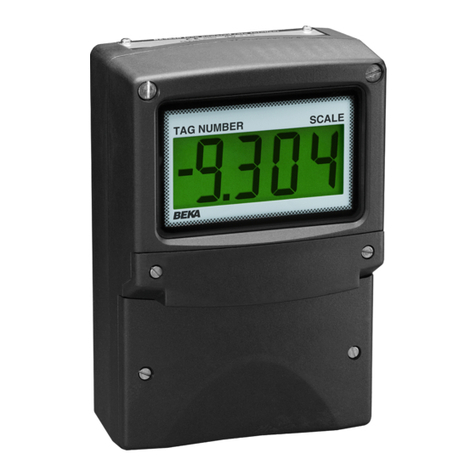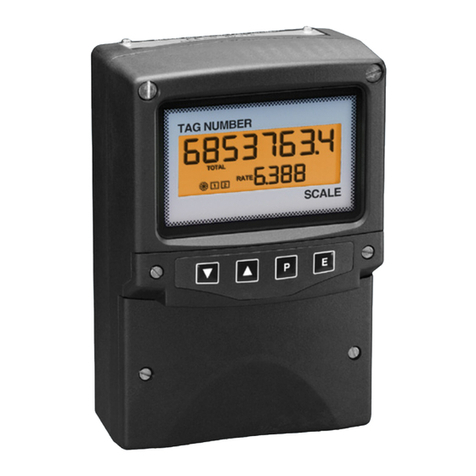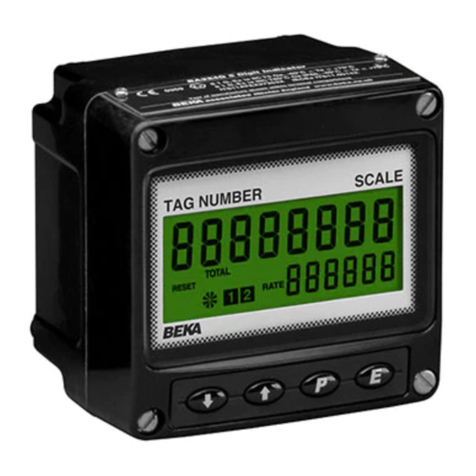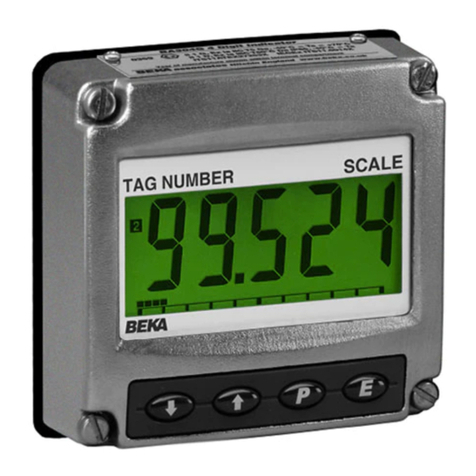
7
For maximum accuracy, the instrument should
be calibrated using an external traceable
current source with a resolution of at least 4µA.
However, when verification is not required, the
instrument may be fitted with an optional
internal calibrator which allows rapid calibration
without the need for external instruments or
disconnec-tion from the 4/20mA input current.
See section 8.2 for details.
6.1 Zero adjustment
Zero is defined as the number displayed by the
indicator with a 4.000mA input current, and may be
adjusted between -1000 and 1000. The zero
potentiometer has two ranges, 0 to 500 and 500 to
1000. Zero polarity is defined by the position of the
suppression / elevation links which are shown in
Fig 6.
Suppression / elevation links
Position Display with 4mA input
adjustable between
Elevation 0 and 1000
Suppression 0 and -1000
Zero link
Position Display with 4mA input
adjustable between
0 to 500 0 and 500
500 to 1000 500 to 1000
6.2 Span adjustment
Span is defined as the difference between the
number displayed with 4.000mA input, and the
number displayed with 20.000mA input. It is
adjustable between 0 and 1999 in four ranges. Fig
6 shows the position of the span links and the span
potentiometer.
Position of Instrument span
of span links adjustable between
000 to 500 000 and 500
or 500 to 1000 500 and 1000
or 1000 to 1500 1000 and 1500
or 1500 to 1999 1500 and 1999
6.3 Decimal point
A dummy decimal point may be displayed between
any of the four digits. The position or absence of
this decimal point is determined by the position of
the decimal point plug-in link shown in Fig 6.
When calculating the required span and zero
settings the decimal point should be ignored.
6.4 Reverse action
Normally the BA304ND display increases as the
input current increases, but this can be reversed.
Please contact BEKA associates for details.
6.5 Calibration example
The BA304ND is required to display:
25.0 with 4.000mA input
115.0 with 20.000mA input
i.e. A zero of positive 250 (Ignoring decimal point)
A span of 900 (Ignoring decimal point)
A decimal point in position 00.0
The following adjustments are required:
Step 1 The BA304ND is required to display a
positive zero therefore the
suppression / elevation links should be
put in the elevation position.
Step 2 The required zero is 250, therefore the
zero link should be put in the 0 to 500
position.
Step 3 The required span is 900, therefore the
span links should be placed in the 500
to 1000 position.
Step 4 The decimal point is required between
the two least significant digits,
therefore the decimal point link should
be placed in the 00.0 position.
Step 5 With 4.000mA input adjust the zero
potentiometer until the indicator
displays 25.0
Step 6 With 20.000mA input adjust the span
potentiometer until the indicator
displays 115.0
Step 7 Repeat steps 5 and 6 until both
calibration points are correct. The span
and zero controls are almost
independent so it should only be
necessary to repeat each adjustment
twice.
6.6 Over and under-range
If the indicator display range is exceeded, the three
least significant digits will be blanked. Under-range
is indicated by -1 and over-range by 1. If the
display range is not exceeded, the BA304ND will
produce accurate readings outside the 4/20mA
current range. Although not guaranteed, most
BA304ND indicators will operate between 3 and
25mA.
